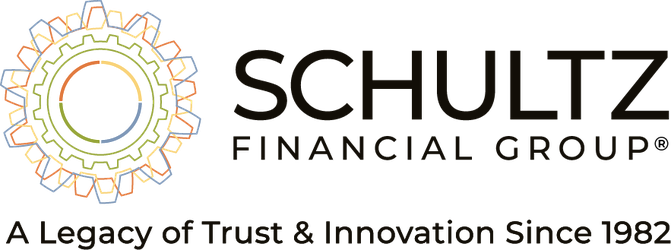
BY JOHN RAMPTON
April 25, 2024
Opinions expressed by Entrepreneur contributors are their own.
Do you ever wonder how top achievers get so much done? Most often, their success is largely due to smart, strategic habits they've developed over time.

iStock image
As part of my work, I meet with hundreds of people every month — many of them founders, CEOs and other highly successful people. During these meetings, I get a sense of what habits have helped them become top performers and successful entrepreneurs. Here are the most common nine productivity tips that come from the most successful people I've met.
1. Recruit your drive
You have the drive to succeed. Think about the last time you accomplished a big task and executed it on time in just the right way. You were probably proud of yourself, especially since your drive pushed you to accomplish something great. In the right circumstances, you can recruit your drive to be even more powerful than it is now.
People who are Extremely Productive (the XP) know this well. Compared to the rest, they are more than twice as likely to be very driven, according to research by the RAIN Group.
If you're stuck in the mud, here are some tips on how to get back into drive:
- Choose the reality you want. If you want your work to be meaningful, you must first choose your new reality. This should include where you want to be and where you want to go in your journey, like launching a new product by June 1.
- Take action every week. List actionable steps that will help you get there. Every step counts.
- Maintain a weekly progress report. Last but not least, track your actions each week, preferably with someone else. With an accountability partner, you'll ensure regular progress.
2. Tame the time beast: Master your schedule
Have you ever felt like time slips through your fingers like sand? A well-managed schedule can change that.
The first step is to identify your peak productivity hours. Would you describe yourself as an early bird or as a night owl? Make sure you schedule demanding tasks during peak periods and less demanding ones during off-peak hours. That way you'll always give them your all.
The next step is to abandon the myth of multitasking. Despite what you may believe, there is evidence to suggest that it reduces productivity. Concentrate on just one task at a time and pay undivided attention to it. For laser-like focus, use the Pomodoro Technique, working in 25-minute intervals with short breaks between.
3. Frogs: The breakfast of champions
Developed by Brian Tracy, Eat the Frog is a method for increasing productivity. It is based on a simple premise; look at your to-do list, pick the toughest task and get it done first thing.
To get the most out of this method, you have to pick the right task to start with.
- Pick an important, but not urgent, task. This allows you to focus on long-term goals and strategic objectives rather than being constantly reactive to immediate demands. By tackling such tasks early, you can prevent them from escalating into urgent matters.
- Check to see if it won't take more than four hours. Choose a project that you can finish before moving on to another. This lets you start the day off with a sense of accomplishment.
- If necessary, break larger tasks down. Creating checkpoints helps you maintain momentum and allows for clear progress toward completion.
4. Commit to just five minutes
If you're faced with an especially daunting task, completing it all at once can seem insurmountable. To overcome this mental barrier, commit to just five minutes of focused effort on the task. As Instagram Co-Founder Kevin Systrom suggests, this small commitment often leads to momentum that carries you through to completing the entire task.
The lesson here is that starting is the hardest part, and taking action is paramount. In most cases, if you get things done and get them out of the way now, you'll find that it actually increases your productivity.
5. Time block your calendar
Time-blocking is a popular way to structure your day around your priorities and activities. Just as you budget your money and name each dollar, you can put intention into every hour. The following steps will help you get started:
- Begin by identifying your priorities and tasks for the day or week
- Allocate specific blocks of time for each task or activity, considering your energy levels and peak productivity times
- Use a digital or physical planner to visually map out your time blocks
- Stick to your schedule as much as possible
- Review and adjust your time blocks regularly to optimize efficiency
- Include breaks and downtime in your schedule to prevent burnout
- Experiment with different time-blocking techniques to find what works best for you and refine your approach over time.
As soon as you finish time-blocking, you can focus on what matters most, and your calendar will help hold you accountable.
6. Declutter your digital den
While the saying "the messier the desk, the messier the mind" once applied primarily to physical office spaces, it now more frequently pertains to the cluttered desktops of workers. In fact, one survey found that 57% of office workers cited finding files as one of their top three challenges.
To organize your digital workspace, start by unsubscribing from irrelevant emails, organizing files into logical folders, and closing unnecessary tabs. A clutter-free digital environment reduces distractions and promotes mental clarity.
7. Surround yourself with blue and red
A British Columbia study found that red and blue work together to support task performance. The color red can assist with detail-oriented tasks and stimulation. While blue can help with creative tasks, motivation and relaxation.
Surrounding yourself with these colors doesn't necessarily mean you need to repaint your office (although you could). You could use red accents or backgrounds for tasks that require attention to detail, such as studying for exams or proofreading documents. Use blue as a background color for brainstorming sessions or creative projects to stimulate innovative thinking and problem-solving.
Keep in mind that individual preferences to color can vary. While the study suggests general trends, it's essential to pay attention to how you personally respond to red and blue stimuli. Experiment with different color combinations too, and monitor your performance and mood to determine the most effective setup for your specific needs. You may prefer the effects of other colors.
8. Work less: Eliminate, automate and delegate
Some research suggests that the human brain can only focus fully for up to four hours a day. For this reason, Darwin, Dickens and many of history's most accomplished people worked intensely for only four hours a day.
How can you accomplish all of your tasks in a single day? Here are a few tips:
- Eliminate. Get rid of unnecessary or distracting tasks. You may need to eliminate a task that takes up your time but doesn't contribute to your goals.
- Automate. Consider automating repetitive processes if you can't eliminate them.
- Delegate. Whenever possible, delegate tasks that cannot be automated but can be performed to an acceptable level by others.
9. Don't waste time making unimportant decisions
As President Barack Obama once told Vanity Fair he never decides what to wear. While president, he only wore gray or blue suits because he had too many other decisions to make.
The majority of decisions a person makes in a day aren't that important. It doesn't really matter if you have pasta or chicken for lunch today or wear a green or blue shirt. But making all those little decisions day in and day out can be exhausting. Simply getting rid of the need to make those choices can enhance your productivity.
One effective way to reduce decision fatigue and enhance productivity is to establish routines and streamline your daily choices. Consider creating a weekly meal plan or laying out your clothes the night before to minimize decision-making in the morning. By simplifying your daily choices, you can free up cognitive resources to accomplish more important tasks.
Enjoy Entrepreneur Magazine on your terms. For just $10.99, get 1-year of the print edition delivered straight to your mailbox and 1-year instant access to the digital edition on your mobile device. Subscribe Now!
This Entrepreneur article was legally licensed by AdvisorStream

